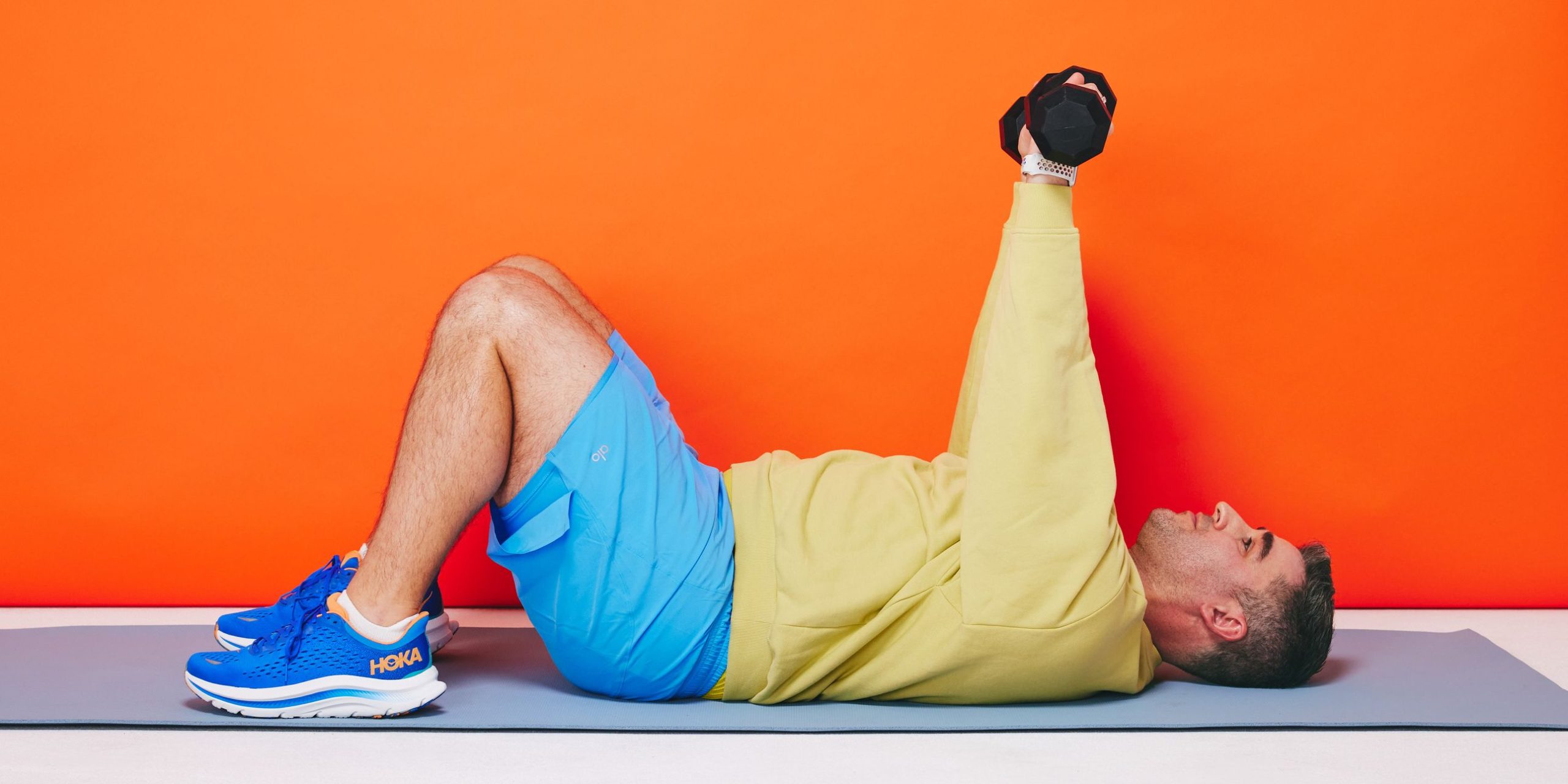What Is HIIT—and How Can It Boost Your Workouts?

Demystifying that famous fitness acronym. Plus, how to use it in your own routine.

Westend61/Adobe Stock
All products featured on Self are independently selected by our editors. However, we may receive compensation from retailers and/or from purchases of products through these links.
Whatever your exercise of choice may be, chances are pretty good you’ve heard of the term high-intensity interval training, or HIIT. In fact, HIIT ranked among the top 10 worldwide fitness trends as recently as 2023, according to the American College of Sports Medicine. Still, the (wordy) name itself might not be all that self-explanatory if you’re not already well-versed in fitness lingo. So what is HIIT really, and how can you use it to make the most of your workouts?
It’s a common and completely valid question, especially since there are plenty of misconceptions about HIIT floating around. Here’s what you need to know about this popular type of training—and how to determine if it’s right for you.
What is HIIT?
There’s a lot more to high-intensity interval training than the name alone suggests. In fact, HIIT refers to a very specific and particular type of exercise—and it’s possible to do interval training without actually doing a HIIT workout.
The hallmark of HIIT is repeated bouts of extremely hard work interspersed with periods of recovery. During your work intervals, you’ll be pushing yourself nearly to your max, Noam Tamir, CSCS, founder and CEO of TS Fitness in New York City, tells SELF.
It’s the opposite of, say, going for a long, easy run where you ration your energy in order to sustain the activity for longer. And it’s a little different from what you probably have seen billed as “HIIT” in gen-pop exercise classes, says Tamir. Most protocols labeled “HIIT” would actually be more accurately described as circuit training or interval training, he says.
When your body is going all-out during true HIIT, it relies on your anaerobic pathways (breaking down glucose without oxygen) to produce the energy it needs for fuel. This provides an immediate supply, but the amount is very limited—which means the length of time you can sustain that degree of effort is quite short, says Tamir.
In fact, in a true HIIT session, you’d likely limit your work intervals to about 20 seconds, he says. Then, you’d take ample recovery time, usually at about a 2:1 or 3:1 ratio of rest to work. If you were doing 20-second sprints, you’d rest for 40 seconds to one minute before beginning your next interval, for example. By comparison, the workouts many people think of as HIIT involve way longer work intervals and much shorter rest periods, precluding the same level of intensity.
Recovering before the next interval is essential: Forcing your body to repeatedly acclimate between two very different states provides excellent cardio conditioning, Franci Cohen, MS, a personal trainer and exercise physiologist, tells SELF. “The rest periods are needed to prep the body and enable it to truly perform at its max during the high-intensity spurts,” she adds.
As for how to determine whether you’re pushing yourself hard enough? Fitness pros rely on a rate of perceived exertion (RPE) scale that describes effort levels on a spectrum of 1 to 10, with 10 being a full-on, giving-it-everything-you-didn’t-think-you-had level of intensity. “Work intervals during a HIIT session should be at near maximum (e.g., 9),” Cohen says.
What are the benefits of HIIT?
Done right, HIIT enhances multiple aspects of performance, especially for those looking to improve at a certain sport: “It’s really for athletes,” says Tamir. “With true HIIT, you’ll maximize your explosive performance and speed.”
There are other benefits, too, including increases in VO2 max (how much oxygen you can use during exercise) and improvements in insulin sensitivity (how responsive your cells are to insulin), blood pressure, and cardiovascular function, according to a 2017 review published in the journal Sports Medicine.
Because HIIT spikes your heart rate during the hard pushes, it can also help contribute to weight loss (if that’s your goal), since you’ll be burning more calories per minute than you would with lower-intensity work, says Tamir. This also makes it a convenient form of exercise for those who are short on time.
What are some common types of HIIT?
Not all of these count as true HIIT according to the strict definition of the term described above, but the lines have been blurred enough that variants are still worth mentioning in any discussion of this training methodology.
Besides, they’ll bestow many similar benefits, according to Tamir. Think: a cardiovascular boost, as well as improvements in strength and muscle endurance, he says.
Common HIIT types
- Reduced-exertion high-intensity training (REHIT): Per the American Council on Exercise’s recommendation, this consists of 20 seconds of work followed by three minutes of recovery, repeated two times.
- Sprint interval training (SIT): 20 to 30 seconds of sprinting followed by two to four minutes of recovery, repeated six to 10 times. For SIT, the typical work to rest ratio is around 1:8, according to the National Academy of Sports Medicine, meaning the recovery periods should be significantly longer than the work intervals.
Common HIIT-adjacent interval workouts
- Tabata: 20 seconds of work followed by 10 seconds of recovery, repeated eight times for a total of four minutes.
- 30-30: 30 seconds of work followed by 30 seconds of recovery, repeated for six to 10 minutes.
- 30-20-10: 30 seconds of low-intensity work followed by 20 seconds of moderate-intensity work followed by 10 seconds of high-intensity work, repeated five times in two to four blocks. Each five-minute block is separated by a two- to four-minute rest period.
- Norwegian 4×4: Four minutes of work followed by three minutes of recovery, repeated four times.
- Pyramid: Work intervals steadily increase in duration until they hit a peak and begin decreasing again, all while recovery intervals stay consistent.
Depending on the length of the work interval, these workouts may have slightly different effects on health and performance. Compared to its shorter-interval workouts, for example, the Norwegian 4×4 is especially effective at raising VO2 max and, in turn, at building endurance, experts previously told SELF. In contrast, the 4×4 may be less effective in increasing strength and explosive power.
What workouts work with HIIT?
You’re probably most familiar with HIIT as a cardio workout, and it’s true that it does lend itself well to cardio-based sprints, whether you’re running, cycling, or rowing.
But you can use HIIT in strength-based workouts, too. Routines that involve bodyweight work or added weight, such as kettlebells, medicine balls, or dumbbells, will tax your muscles while spiking your heart rate, fitness expert Rob Sulaver, MS, CSCS, a cofounder of Rumble Boxing and the director of sport science for the University of Michigan’s wrestling program, tells SELF.
Just make sure you choose exercises that allow for explosive motions, says Tamir—think push-ups, squats, or kettlebell swings rather than moves like bench presses or lat pull-downs. (If you’re looking for ideas, you can try this HIIT leg workout or this full-body HIIT kettlebell routine.)
What are some mistakes or safety issues to avoid?
One common error is trying to push the limits before you have the form down pat. This is something Tamir sees a lot.
“Bodyweight movements are going to be safer,” he says. “When you add weight, technique is really important. If you’re going all-out and your form is off, you can put a lot of pressure on certain muscles and joints, which can lead to injury”—hence why it’s important to make sure you can do an exercise correctly first before kicking the tempo up.
While we’re on the subject of injury, definitely don’t play hooky on your warmup, either. Whether you’ll be doing cardio- or strength-based HIIT, your warmup should include mobility moves, like hip-opening stretches and thoracic spine rotations, as well as slower-tempo reps of the exercise you intend to use for HIIT, such as squats.
“The more intense the workout, the more important the warm-up is,” Tamir says. “It’s kind of like prepping your nervous system as well. If your body is not ready for that work, the outcome could be injury, or your performance can suffer.”
Scheduling a long HIIT session is also a mistake because you’re not going to be able to sustain near-max intensity for a 45-minute class, Tamir says. Instead, a true HIIT workout would look something like this: eight all-out, 20-second sprints, with one minute of rest between each. That means your entire workout (not counting warmup and cool-down) would span just over 10 minutes.
Finally, there’s nothing that says you need to do traditional HIIT if you just want some demanding interval training. In fact, according to Tamir, the modified HIIT we often see in classes—and that he uses for some of his group sessions—is probably more accessible to the average exerciser, and thus the better choice.
Whether you’re doing true HIIT or modified interval training, don’t underestimate the importance of recovery: Prioritizing frequent, intense workouts while neglecting rest days can not only lead to diminishing returns on performance, but also leave you open to injury, fatigue, or burnout, as SELF recently reported. Limit HIIT to one or two workouts a week, and make sure you’re balancing it with plenty of easy workouts—as well as at least one straight recovery day.
Regardless of the HIIT (or HIIT-adjacent) workout you decide on, always consult a healthcare provider like your primary care physician before starting this type of demanding exercise, especially if you have a preexisting health condition (such as heart disease, diabetes, or high blood pressure), according to experts. And start slow and take precautions once you do dive in. Concerning symptoms like lightheadedness, confusion, and atypical changes in blood pressure or heart rate are cause to stop right away and seek medical attention.
Related:
- Kim Kardashian Breaks Down Her Weekly Workout Routine
- 9 Fitness Tips From Athletes in Their 90s (and Beyond!) Who Are Still Crushing It
- Here’s Exactly What to Do When You Only Have 20 Minutes to Exercise
Get more of SELF’s great workout content delivered right to your inbox—for free.



